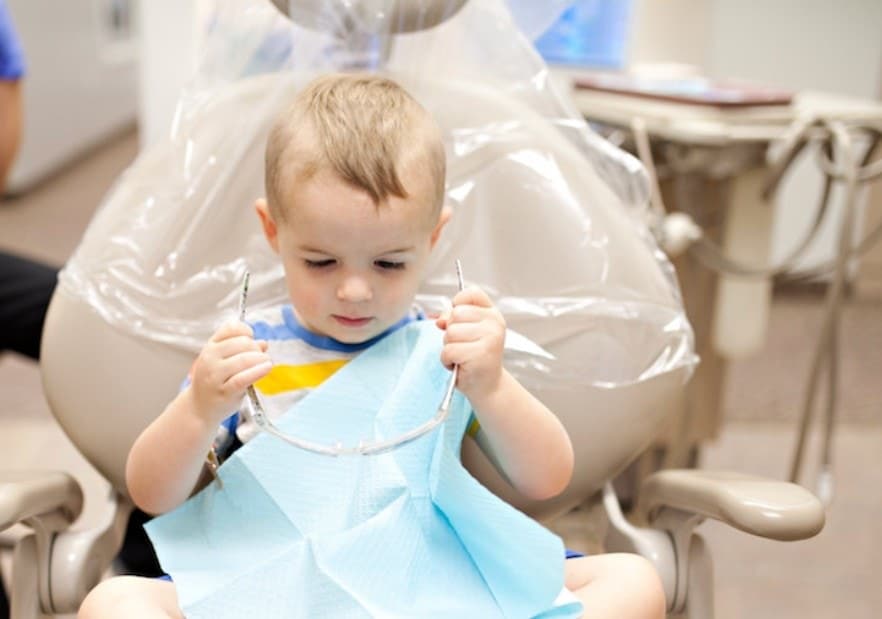When should you bring your child to the eye doctor?

Experts say 80% of what a child learns in school is information that is presented visually so it's essential to catch vision issues early to ensure a child's success in the classroom and beyond.
Table of Contents
As parents, we are always looking out for our child’s health, from scheduling regular pediatrician appointments and dental visits to monitoring their mental and physical development. However, one appointment that might get postponed is a comprehensive eye exam. Experts say 80% of what a child learns in school is information that is presented visually so it’s essential to catch vision issues early to ensure a child’s success in the classroom and beyond.
As a mother and optometrist, here are a few steps to take to protect your children’s vision:
1. Schedule a comprehensive eye exam.
A school vision screening or brief examination by a pediatrician is a good start but you can ensure more in-depth vision problems aren’t missed by seeing an eye doctor. Regular comprehensive eye exams are particularly important during childhood when eyes are developing rapidly.
The American Optometric Association recommends a first eye examination beginning at age 6 to 12 months old, at least once between ages 3 to 5, and then at least annually between ages 6 to 18. By doing this, you’ll be able to help your kids see well today and ensure vision issues are caught early.
2. Monitor screen time.
Today, children spend more time staring at screens than ever before. While technology can be a great tool for learning, all that screen time can also lead to digital eye strain, resulting in tired eyes, headaches, itchy eyes, blurred vision and increased sensitivity to light. It’s important to encourage kids to take a break from their phone and tablet.
I suggest the “20-20-20” rule: for every 20 minutes of time on an electronic device, have them take a 20-second break and focus their eyes on something at least 20 feet away. It’s also important to strike a balance between screen time and outdoor time, encourage kids to put down their devices and get outside!
There are a number of health benefits associated with being outside, from increasing Vitamin D levels to reducing stress. Studies have also shown that kids who play outside may be at a reduced risk of developing vision issues like nearsightedness.
3. Check for signs of vision problems.
Keep an eye out for symptoms of vision issues, like squinting, sitting too close to the TV or a child complaining of eye strain or headaches. This could be a sign of myopia, which is one of the most prevalent vision issues, especially in children. Better known as nearsightedness, myopia is a condition of the eye where close up objects appear clear, but at a distance everything becomes blurry and out of focus.
Over time, myopia can put the eyes at risk for serious vision-threatening conditions and is a real and growing problem. About 42% of Americans ages 12-54 are nearsighted—up from 25% just 40 years ago. Many kids believe blurry vision is just normal. They’ve never known anything different. If parents can spot the signs of vision issues early on and let their child’s eye doctor know, future visions issues could be prevented or treated early on.
4. Protect eyes from UV exposure.
We all remember the importance of applying sunscreen before going out in the sun, however, most of us don’t know that exposing our eyes to the sun’s UVA and UVB rays can be just as damaging.
UV damage is associated to vision issues including cataracts, macular degeneration and cancer. Remember to keep your child’s eyes protected when spending time outdoors all year long. Children are more at risk for retinal damage from UV rays because their pupils are larger and the lens inside the eye is clearer, which enables more absorption of UV radiation into the eye. Encourage kids to stay inside during the sun’s peak hours and when they do go outside, have them wear sunglasses with UV protection that block UVA and UVB rays.


































